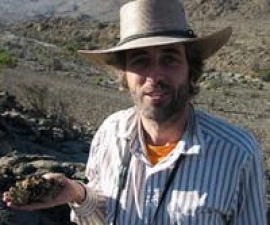

Research Bio
Carl Rothfels is an evolutionary biologist who uses phylogenetic tools to study plants. He's fascinated by the patterns and processes of plant diversification, including molecular divergence, morphological change, speciation, and extinction. Much of his work focuses on the “seed-free” vascular plants—the ferns and lycophytes—two under-studied clades that are captivating in their own right, and that provide an important point of comparison for understanding the evolution of their relatives, the seed plants. Ferns and lycophytes are also an excellent system for investigating one of his main research questions: what is the evolutionary fate of lineages that have more than two sets of chromosomes? These “polyploid” lineages are common and often ecologically highly successful, but their performance over evolutionary time scales is unclear (and highly contentious). Since the mid-1900s, researchers have debated whether ploidy shifts result in lineages with higher diversification rates than their diploid progenitors. His research uses newly developed phylogenetic methods to address this question.
He's interested in most anything that involves phylogenetic methods and/or plant evolution, but particularly so if it incorporates diverse types of data (molecular data, morphological data, chromosome data), focuses on ferns, or investigates polyploidy. Projects that he's currently involved with include:
- Generating data from single copy nuclear loci with next generation sequencing techniques, and using those data to unravel reticulate polyploid complexes (groups with a lot of linked hybridization and polyploidy). Unrecognized cryptic species abound!
- Using phylogenetic techniques to test the long-term fate of polyploids in the fern family Cystopteridaceae (teaser: doesn’t look good for them).
- Testing how methods that infer speciation and extinction rates perform when their underlying model assumptions are violated.
- Using transcriptomic data to infer the deep relationships within plants, especially within the ferns.
- Sequencing the genome of the water fern Azolla (the first fern genome to be sequenced!), and characterizing its symbiotic microbiome (Azolla has specialized leaf cavities that contain a rich assemblage of bacteria, including nitrogen-fixing cyanobacteria).
Research Expertise and Interest
evolutionary biology, phylogenetic methods, plant evolutionary biology
